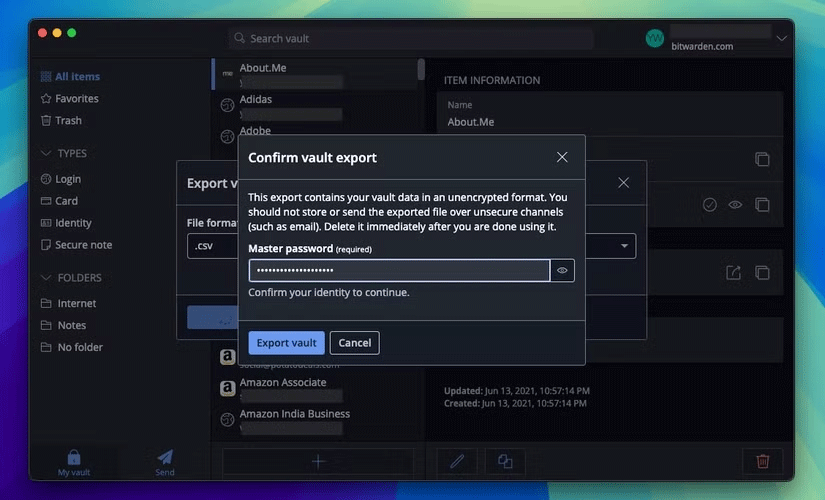4 great benefits of using open source software
There is an open source alternative to almost any proprietary application. It's just a matter of finding it. While we don't exclusively use open source software, many people prefer it to proprietary software for a number of reasons.
1. Cost effective

The source code of an open source application is publicly available for use, modification, and distribution. While open source applications are not always free, the vast majority of them are. This is the main reason why open source is sometimes confused with free.
There are commercial open source applications such as Docker, Red Hat Enterprise Linux, GitLab, and IntelliJ IDEA. However, most open source applications are completely free, hence the concept of free and open source (FOSS), and there is a fee for licensing open source software for commercial use. Sometimes, developers may ask for voluntary contributions from users, but there is usually no one-time fee or lifetime subscription fee.
Open source software is a cost-effective alternative to the sometimes predatory pricing models used by software companies like Adobe. A professional designer might be able to justify the hefty cost of Creative Cloud, but a novice will be just fine with GIMP and Inkscape.
Note : Open source software is sometimes classified as "free", but here it means "free, not complimentary". However, open source software can actually be used for free with sufficient technical knowledge, even under a commercial license.
2. Transparency and security

Due to the transparency of the source code and openness in the development process, open source software is considered to be more secure than closed source software. This is based on Eric Raymond's Linus' law, which states that "with enough attention, every bug is trivial".
Open source applications with active communities and expert volunteers are less likely to have bugs, malware, and other vulnerabilities. Proprietary software is less transparent by design and can include undiscovered backdoors, bugs, and vulnerabilities.
While open source software is not secure by default, it can be audited by independent experts and does not require much trust in the original developer. Using proprietary software requires you to trust the person selling it to you.
3. Documentation and community support

Because open source licensing allows more users to access the product, these applications tend to have more active communities than proprietary software. A larger user base means more people are contributing code, tutorials, translations, manuals, and reviews to the product. Additionally, open source projects tend to be community-driven, with an open feedback loop to ensure the software is designed for users and has few redundant features.
This is in contrast to proprietary applications, where major decisions are often made without user input. Like Evernote's price increase, major changes can be made at any time. Some proprietary tools may provide substantial documentation, especially for beginners. There is less incentive to create documentation for open source projects. However, open source documentation tends to be more comprehensive and detailed when available.
4. Customization and Sustainability
By design, proprietary tools prevent you from seeing what's running on the backend and making adjustments. Open source software, on the other hand, moves you from being a consumer to an active participant in the development lifecycle.
Unlike proprietary software, which restricts you to passive roles — installing, using, and waiting for updates — open source software allows you to get involved in the code and modify the software to meet your needs, fix bugs, or add features. The WordPress content management system is a great example of how modular open source software works.
The freedom to participate means that open source projects can continue to be actively developed even if the original developer stops contributing. For example, Linus Torvalds currently contributes very little code to the Linux kernel, but the project will continue for a long time through its various distributions.
Open source software is extremely beneficial to both users and developers in the ecosystem. While the open source philosophy is great, it is difficult to implement. A large number of open source projects are developed for technical users and tend to be unintuitive to the average user. Project maintainers can be unresponsive or difficult to deal with, and a project can stall due to lack of funding. However, open source software drives the modern world, and we should all aim to use and contribute more to open source projects.
You should read it
- How to Become an Open Source Enthusiast
- The dominance of open source software (P.1)
- Warning: The number of vulnerabilities in open source software are increasing rapidly
- Can open source technology make money?
- 10 things to know about open source software
- Microsoft unexpectedly shared 60,000 free software patents
 How to delete folder and file search history on File Explorer
How to delete folder and file search history on File Explorer Tips for washing and keeping wool and felt coats new
Tips for washing and keeping wool and felt coats new Instructions for deleting Microsoft Copilot activity history
Instructions for deleting Microsoft Copilot activity history New Phishing Attack Disables iPhone Security: How to Protect Yourself?
New Phishing Attack Disables iPhone Security: How to Protect Yourself? Interesting knowledge that you never expected
Interesting knowledge that you never expected 3 minutes of film made with AI technology makes Japanese anime industry scared
3 minutes of film made with AI technology makes Japanese anime industry scared